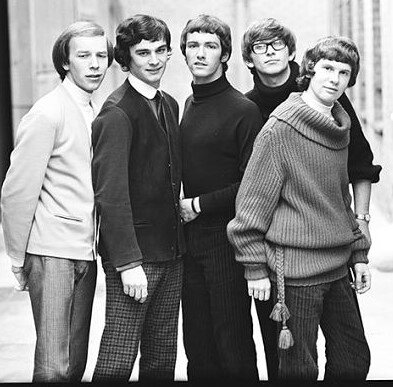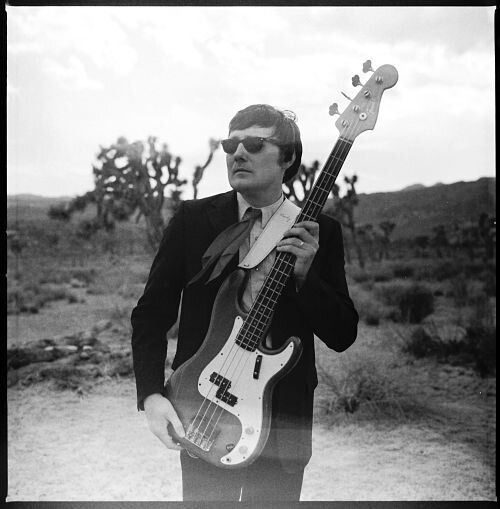Pete Strand (Yipes!)


By Joe Gagliardo
The power of power pop!
Using a friend’s 6-string to start a garage band while in 9th Grade, Pete’s aggressive playing broke the B and E strings. He then started playing bass lines on the 4 remaining strings, and within weeks moved up to a red Kalamazoo SG styled bass with a Fender-shaped headstock.
Growing up in a time when the garages and basements were bursting with bands, Pete jumped right into the fray. Playing the classic rock of the day in Wisconsin with Bare Nerve Blues (Cream, Alice Cooper, Beatles, etc.), and morphing into Rory Slick and the Roadsters when there was a resurgence of Doo Wop and 50’s music, and moving back to a classic rock sound incorporating a few originals with Slick, the band became a favorite at the Church Key in Madison, Wisconsin.
In the late Fall of 1977, after a summer of a rotating cast of bandmates, Pete and childhood friends/long-time band mates, Pat McCurdy and Mike Hoffmann, formed the power-pop/new wave band Yipes. The band started playing extensively, developed a strong following, and found a music home at Jay’s Longhorn, which was part of Minneapolis’ hot music scene.
Jimmy Ienner signed the band to his Millennium record label, where they released two LPs, Yipes and A Bit Irrational. Yipes toured extensively in support of the records, including opening slots with Cheap Trick, Triumph, Foreigner, Kansas, Robert Palmer, Eddie Money, and Southside Johnny and the Asbury Jukes, among others, but national success eluded the band.


After Yipes, Pete continued to play bass in various musical configurations, until he stepped away from full-time playing to go to law school.
In 2013, Yipes reunited to play at the Wisconsin Area Music Industry (“WAMI”) awards event when the band was inducted into the WAMI Hall of Fame. This led to more high-profile shows, including Milwaukee’s Summerfest. The band has continued to perform, and released a new album in 2018, entitled Yipes!!!, featuring all of the original members.
These days, Pete’s go-to bass is a 1979 natural finish Rickenbacker 4001, though he has a complete arsenal, including a ‘59’ style Roadworn Fender Jazz Bass, a late 90’s Fender Precision Bass, a Danelectro dual cutaway, a Fender Blasted Sandstone Jazz bass, strung with black nylon strings, and a 1974 Hofner Beatle bass. His preferred amp is an Ampeg Portaflex.
Pete’s musical influences reflect the variety of music he has played-Paul McCartney, Jack Bruce, James Jamerson, and Duck Dunn. As you can hear from the tunes below, Pete plays melodically, in support of the song, giving the other band members a platform to play off of.
You can catch Pete and Yipes live, and when he is not playing his bass, he is a top-entertainment lawyer in Chicago with Mandell Menkes, where he has devoted a significant amount of his time as a volunteer with Lawyers for the Creative Arts.
Yipes-“Blink of an Eye” https://youtu.be/s6hBLEcPeM0
Yipes Redux-“Last of the Angry Young Men” https://youtu.be/fTSH95b0894
Pat McCurdy & The Men About Town-“Don’t Move” https://youtu.be/qeBDXg1m-uI




























